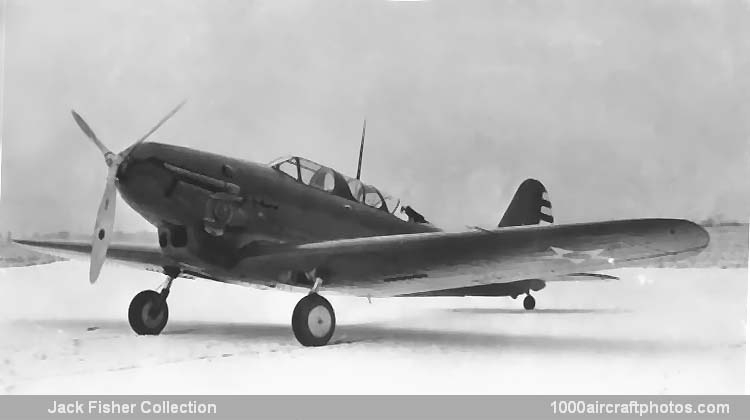The design originated as a military version of the Lockheed Altair, known as the XP-900, with a Curtiss V-1570-23 engine. This was purchased by the USAAC as the YP-24 in September 1931, and four more Y1P-24s were ordered, together with four prototypes of a ground attack version designated Y1A-9. Early in 1932, Detroit Aircraft, of which Lockheed was then a subsidiary, withdrew from aviation, but the P-24's chief designer, Robert Wood, joined Consolidated and a new version of the same design was submitted.
In place of the eight aircraft ordered from Lockheed, the USAAC ordered from Consolidated two prototypes of the revised design, one Y1P-25 pursuit and one XA-11 attack type. The Y1P-25 had a V-1570-27 in-line engine with turbo-supercharger on the port side of the nose; in the XA-11, the superchargers were not used.
The Y1P-25 was tested towards the end of 1932, showing promising performance, but crashed on January 13, 1933. Four examples of an improved version with the supercharged 675 hp V-1570-57 engine were then ordered, and were delivered as P-30s for tests in mid-1934.
Following these trials, a contract was awarded on December 6, 1934, for 50 P-30As. Shortly after delivery, these aircraft were reclassified in a new category for two-seat fighters, as PB-2As, the two surviving P-30s then becoming PB-2s. The PB-2As had the 700 hp V-1570-61 engine and the effect of the turbo-supercharger was to increase the top speed by 60 mph (97 kmh) between sea level and 20,000 ft (6,096 m).
The A-11 series continued with four service test models ordered with the four P-30s, and distinguished by the absence of turbo-superchargers and the use of two-blade propellers. One A-11 became the XA-11A as a flying test bed for the Allison V-1710 liquid-cooled engine."
Span: 43 ft 11 in (13.38 m)
Length: 30 ft 0 in (9.14 m)
Height: 8 ft 3 in (2.51 m)
Wing area: 297 sq.ft (27.59 sq.m)
Weight empty: 4,306 lb (1,953 kg)
Loaded weight: 5,643 lb (2,560 kg)
Max speed: 255 mph (410 kmh) at 15,000 ft (4,570 m)
Cruise speed: 75 mph (120 kmh) at 29,527 ft (9,000 m)
Landing speed: 37 mph (60 kmh)
Climb: to 15,000 ft (4,570 m) 7 min 47 sec
Range: 508 mls (817 km)
